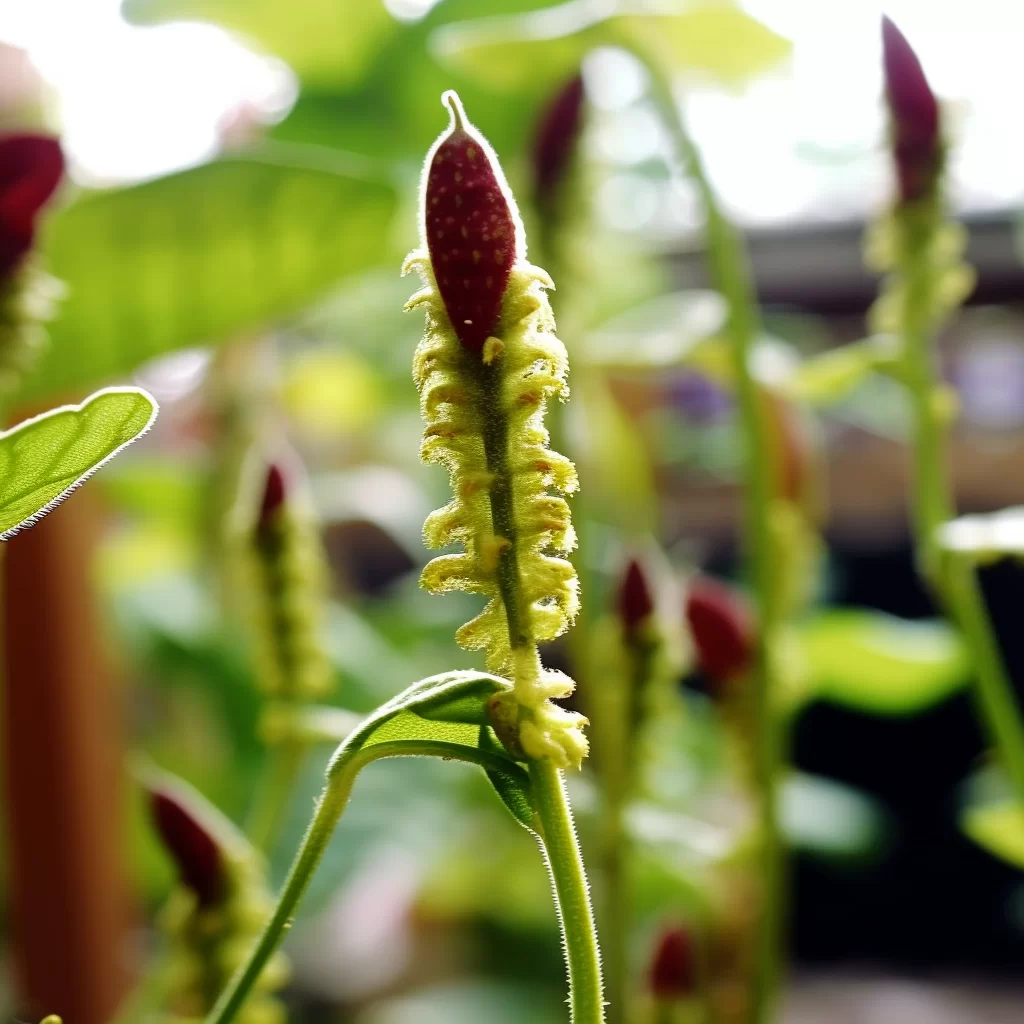Story of Day :
Contents
- 1 Dragon Tongue Bean Plant: A Complete Guide and Care Tips
- 2 What is a dragon tongue bean plant?
- 3 Where can I grow a dragon tongue bean plant?
- 4 How do I sow my dragon tongue bean seeds?
- 5 What are the watering requirements for dragon tongue bean plants?
- 6 How do I fertilize my dragon tongue bean plant?
- 7 How do I manage pests and diseases on my dragon tongue bean plants?
- 8 Conclusion
Dragon Tongue Bean Plant: A Complete Guide and Care Tips
Gardening enthusiasts are always in search of unique plants that can add charm to their gardens.
Dragon tongue beans, also known as Dragon Langerie or Mosaic beans, are one such plant that can bring a splash of colors to your garden.
These beautiful beans originated from Central America and carry a unique taste with them.
In this article, we will discuss everything you need to know about the dragon tongue bean plant.
What is a dragon tongue bean plant?
The dragon tongue bean plant belongs to the legume family and is known for its distinctive appearance.
The pods of these beans are flat, long, and have purple stripes on yellow-green skin color.
They grow up to six inches in length but should be harvested before they become too mature as they turn tough and stringy.
Where can I grow a dragon tongue bean plant?
The ideal growing conditions for the dragon tongue bean include full sun exposure along with well-draining soil which is rich in organic matter content.
- The best time for planting these seeds outdoors is between mid-spring and summer when temperatures range between 60-95°F (15-35°C).
- If your area experiences early frost or cold weather conditions, then start sowing them indoors around two weeks before transplanting outside after all danger of frost has passed.
- You can also grow these plants in containers if you have limited garden space or want more control over soil quality.
How do I sow my dragon tongue bean seeds?
Sowing your own seeds requires care and attention to ensure optimal germination rates:

- Prioritize sourcing fresh seed packets from reputable suppliers for maximum viability rates.
- Soak your seedlings in warm water overnight before planting to soften the outer shell and accelerate germination rates.
- Plant each seed about 1.5-2 inches (4-5cm) deep and leave space of at least six inches between each plant to ensure adequate air circulation.
What are the watering requirements for dragon tongue bean plants?
The dragon tongue bean plant requires regular watering but not overwatering:
- Avoid waterlogging by allowing excess water to drain from the soil, as these beans do not like sitting in standing water.
- Check soil moisture levels daily, especially during hot summer months or if you’re growing them indoors.
Water them when the soil feels dry to touch approximately one inch below its surface.
How do I fertilize my dragon tongue bean plant?
A well-fed dragon tongue bean plant will flourish with optimal growth rates and bountiful harvests:

- You can feed your plants with an all-purpose fertilizer such as a 10-10-10 mix every two weeks until they start flowering, after which you should switch to a low-nitrogen fertilizer like a 3-12-12 mix.
- If growing outdoors, adding organic matter such as compost or manure into the topsoil prior to planting can help provide essential nutrients for optimal growth rates
How do I manage pests and diseases on my dragon tongue bean plants?
The most common pests that attack these beans include spider mites, aphids, stink bugs while fungal infections such as powdery mildew can affect their leaves.
Here are some tips on how to deal with these issues:
- Spray neem oil solution on affected areas to deal with spider mites and aphids.
- Handpicking stink bugs or using organic pesticides such as pyrethrin can help control their population.
- In case of powdery mildew, it’s best to remove affected leaves immediately and apply the appropriate fungicide recommended by your local gardening store.
Conclusion
Dragon tongue bean plants are unique and colorful additions to any garden, bringing a splash of purple stripes on yellow-green skin color.
They grow best in well-draining soil, full sun exposure while requiring regular watering and fertilization for optimal growth rates.
With proper care, these beans will reward you with bountiful harvests throughout the season!
